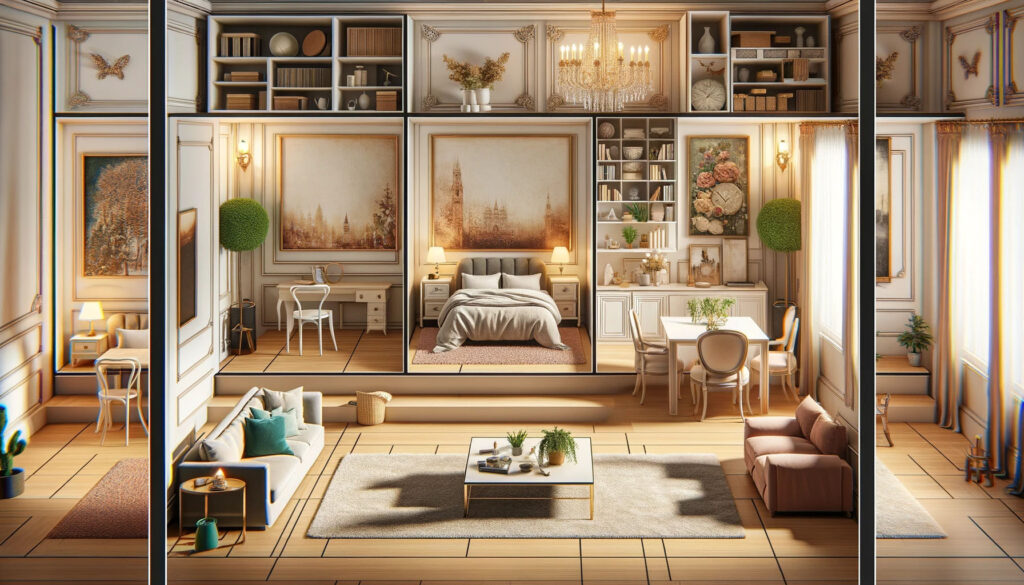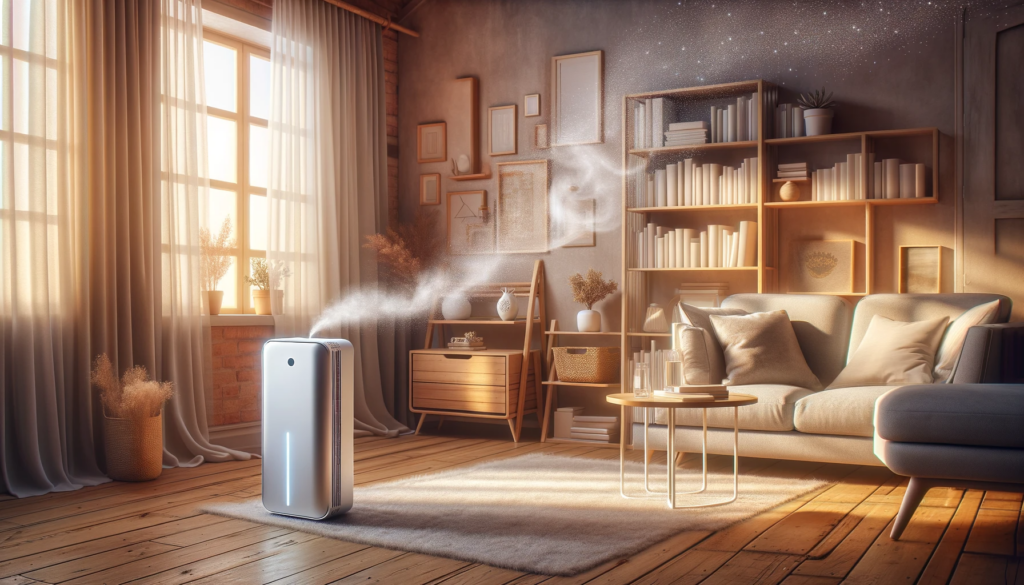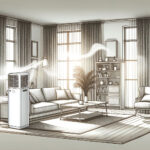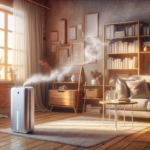When it comes to air purification, one size does not fit all. The dimensions of your room play a crucial role in determining the effectiveness of your air purifier. Understanding the importance of room dimensions and choosing the right air purifier can ensure that you breathe clean and healthy air. In this article, we will explore how room size, shape, and ceiling height impact air purification, as well as provide key takeaways to help you tailor your air purifier to your room’s dimensions.
Key Takeaways
- Room size affects the performance of an air purifier. Larger rooms require air purifiers with higher capacity.
- Different room shapes can impact air circulation and filtration. Consider the shape of your room when selecting an air purifier.
- Ceiling height influences the effectiveness of air purification. Higher ceilings may require air purifiers with higher airflow.
- Match the air purifier capacity to the room size. Look for the recommended room size coverage provided by the manufacturer.
- Consider additional features such as HEPA filters, activated carbon filters, and smart capabilities when selecting an air purifier.
Understanding the Importance of Room Dimensions
The Impact of Room Size on Air Purification
The size of your room plays a crucial role in the effectiveness of your air purifier. Larger rooms require air purifiers with higher CADR (Clean Air Delivery Rate) to ensure efficient purification. On the other hand, smaller rooms can be adequately serviced by air purifiers with lower CADR ratings.
When selecting an air purifier, consider the square footage of your room. It’s important to choose a purifier that is designed to handle the specific dimensions of your space. A purifier that is too small for your room may not effectively clean the air, while a purifier that is too large may consume unnecessary energy.
To determine the appropriate CADR for your room, you can refer to the following table:
| Room Size (Square Feet) | Recommended CADR (CFM) |
|---|---|
| Up to 150 | 100-150 |
| 150-300 | 150-250 |
| 300-450 | 250-350 |
| 450-600 | 350-450 |
Keep in mind that these are general guidelines and may vary depending on other factors such as the level of air pollution in your area and any specific health concerns you may have.
Remember, choosing an air purifier that is appropriately sized for your room will ensure optimal air purification and create a healthier living environment.
Considerations for Different Room Shapes

When considering the shape of your room, there are a few important factors to keep in mind:
- Square rooms tend to have more even air distribution compared to rectangular rooms.
- L-shaped rooms may have areas with poor air circulation, so it’s important to strategically place your air purifier.
- Open-concept rooms can present challenges as air purifiers may struggle to effectively clean the entire space.
To ensure optimal air purification in rooms with different shapes, consider the following tips:
- Position the air purifier in a central location to maximize air circulation.
- Place the air purifier away from obstructions such as furniture or walls to allow for better airflow.
- Consider using multiple air purifiers strategically placed in larger or irregularly shaped rooms.
Remember, understanding the shape of your room is crucial in tailoring your air purifier’s performance to effectively clean the air in every corner.
How Ceiling Height Affects Air Purification
Ceiling height plays a crucial role in the effectiveness of air purification. Taller ceilings allow for better air circulation and can help distribute purified air more evenly throughout the room. Here are a few key points to consider:
- Higher ceilings provide a larger volume of air that needs to be purified, so it’s important to choose an air purifier with a sufficient CADR (Clean Air Delivery Rate) to handle the increased air volume.
- Air purifiers with adjustable fan speeds can be beneficial in rooms with high ceilings, as they can be set to a higher speed to ensure adequate air circulation.
- It’s also worth noting that rooms with high ceilings may require a longer air purifier runtime to achieve the desired air quality, as the increased volume of air takes longer to purify.
Remember, when selecting an air purifier for a room with high ceilings, consider both the room size and the ceiling height to ensure optimal air purification.
Choosing the Right Air Purifier for Your Room

Matching Air Purifier Capacity to Room Size
When choosing an air purifier for your room, it is important to consider the capacity of the purifier in relation to the size of the room. The capacity of an air purifier is typically measured in terms of the volume of air it can effectively purify in a given amount of time, often expressed as cubic feet per minute (CFM). Here are some key points to keep in mind:
- Choose an air purifier with a capacity that matches or exceeds the size of your room. If the purifier is too small for the room, it may not be able to effectively clean the air. On the other hand, if the purifier is too large, it may consume more energy than necessary.
- Consider the recommended room size provided by the manufacturer. Many air purifiers come with a recommended room size range, which can serve as a helpful guideline in selecting the right purifier for your room.
- Take into account the specific conditions of your room. If your room has high levels of pollutants or if it is frequently occupied by multiple people, you may need a more powerful air purifier.
- Keep in mind that air purifier capacity is not the only factor to consider. Other features, such as the type of filtration system and the presence of additional sensors or controls, can also impact the effectiveness of the purifier.
Factors to Consider When Selecting Air Purifier Features
When selecting air purifier features, there are several factors to consider that can greatly impact the effectiveness of the device:
- Filtration System: Look for air purifiers with advanced filtration systems, such as HEPA filters, which can capture particles as small as 0.3 microns.
- CADR Rating: The Clean Air Delivery Rate (CADR) measures how quickly an air purifier can clean the air in a specific room size. Choose a purifier with a CADR rating that matches the size of your room.
- Noise Level: Consider the noise level of the air purifier, especially if you plan to use it in a bedroom or office. Look for models with a low noise level setting.
- Energy Efficiency: Check the energy consumption of the air purifier to ensure it is energy-efficient and won’t significantly increase your electricity bill.
Remember, selecting the right air purifier features is crucial for optimal air purification and a healthier indoor environment.
The Role of Air Changes per Hour (ACH) in Room Size
Air Changes per Hour (ACH) is a crucial factor to consider when determining the effectiveness of an air purifier in a specific room. ACH refers to the number of times the air in a room is completely replaced with fresh air within an hour. Higher ACH values indicate that the air purifier can filter the room’s air more frequently, resulting in better air quality.
To determine the appropriate ACH for your room, consider the following:
- Room size: Larger rooms may require a higher ACH to effectively filter the air.
- Occupancy: Rooms with more occupants or higher activity levels may benefit from a higher ACH.
- Allergens and pollutants: If your room is prone to allergens or contains high levels of pollutants, a higher ACH can help maintain cleaner air.
It’s important to note that increasing the ACH may also increase noise levels and energy consumption. Finding the right balance between air purification effectiveness and comfort is essential.
Tip: Consult the air purifier manufacturer’s recommendations or seek professional advice to determine the ideal ACH for your specific room.
Conclusion
In conclusion, understanding the importance of room dimensions is crucial when it comes to tailoring your air purifier. Room size, shape, and ceiling height all play a significant role in the effectiveness of air purification. Choosing the right air purifier that matches the capacity of your room is essential, along with considering factors such as features and air changes per hour. By taking these factors into account, you can optimize the performance of your air purifier and ensure a cleaner and healthier indoor environment.
Frequently Asked Questions
1. What is the importance of room dimensions when it comes to air purification?
Room dimensions play a crucial role in air purification as they determine the size of the space that needs to be cleaned. A larger room may require a more powerful air purifier to effectively filter the air.
2. How does room size impact air purification?
Room size affects air purification as larger rooms have more air volume that needs to be filtered. It is important to choose an air purifier with the appropriate capacity to effectively clean the air in a specific room size.
3. What considerations should be made for different room shapes?
Different room shapes can impact the airflow and distribution of pollutants. It is important to choose an air purifier that can effectively circulate the air in rooms with unique shapes, such as corners or irregular layouts.
4. How does ceiling height affect air purification?
Ceiling height can impact the circulation of air and the distribution of pollutants. In rooms with high ceilings, it is important to choose an air purifier with sufficient airflow and coverage to effectively clean the air at different heights.
5. How do you match air purifier capacity to room size?
To match air purifier capacity to room size, consider the square footage of the room. Most air purifiers specify the recommended room size for optimal performance. Choose an air purifier that is suitable for the square footage of your room.
6. What factors should be considered when selecting air purifier features?
When selecting air purifier features, consider factors such as the type of filtration system, the presence of additional features like air quality sensors or timers, noise levels, and energy efficiency. Choose features that align with your specific needs and preferences.







